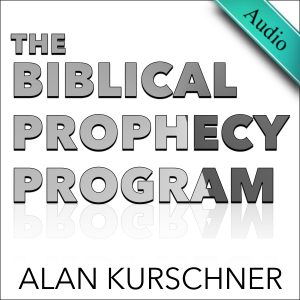Podcast: Play in new window | Download | Embed
 On the program, I discussed a couple of issues. First, I talked about the pretrib theological expression “secret rapture.” I explained what that means in pretrib parlance and why it is an unbiblical concept. By “secret,” pretribulationists are referring to Jesus’ purported unperceived snatching of saints at the rapture, not “secret” in the sense of the unknown day or hour. The concepts of a “secret rapture” and imminence are related but are not the exact same thing. For the pretribulationist, a secret rapture is about the manner Jesus raptures the church, while imminency is about it occurring at any moment. The secret rapture notion teaches that Christians will be going on with their everyday business and without notice vanish by being secretly raptured into the clouds to meet Jesus. This “dog whistle” return of Jesus, however, does not line up with the Scriptural account, because it will be anything but silent and secret. His overture of a return will be loud and visible. The pretribulational secret rapture is not a glorious event. It robs Christ of his glory at his return without displaying its power to the world.
On the program, I discussed a couple of issues. First, I talked about the pretrib theological expression “secret rapture.” I explained what that means in pretrib parlance and why it is an unbiblical concept. By “secret,” pretribulationists are referring to Jesus’ purported unperceived snatching of saints at the rapture, not “secret” in the sense of the unknown day or hour. The concepts of a “secret rapture” and imminence are related but are not the exact same thing. For the pretribulationist, a secret rapture is about the manner Jesus raptures the church, while imminency is about it occurring at any moment. The secret rapture notion teaches that Christians will be going on with their everyday business and without notice vanish by being secretly raptured into the clouds to meet Jesus. This “dog whistle” return of Jesus, however, does not line up with the Scriptural account, because it will be anything but silent and secret. His overture of a return will be loud and visible. The pretribulational secret rapture is not a glorious event. It robs Christ of his glory at his return without displaying its power to the world.
For the Lord himself will come down from heaven with a shout of command, with the voice of the archangel, and with the trumpet of God, and the dead in Christ will rise first. (1 Thess 4:16; cf. Matt 24:30–31; Rev 1:7; 6:16–17!)
Next, I talked about the origin of the secret rapture theory giving just a sketch of its beginnings. Pretribulationism is a relatively new British-American teaching in church history, originating in the nineteenth century by the Plymouth Brethren theologian John Nelson Darby. If it is found in other parts of the world today, it is only because it has been exported by American and British pretribulational missionaries. In the latter part of the nineteenth century, the annual Niagara Bible Conference would play a large part in promoting pretribulationism and its imminence theology. Three major pretrib figures were James H. Brookes (1830–?), C.I. Scofield (1843–1921), A.C. Gaebelein (1861–1945). The annual Niagara Bible Conference dissolved after 1900; however, Gaebelein founded an offshoot conference in Sea Cliff, New York meeting from 1901 through 1911. The Sea Cliff Bible Conference would promulgate pretribulational imminence theology on an new level and be supplemented by an earlier magazine that Gaebelein founded, Our Hope.
At this time Gaebelein encouraged C. I. Scofield to write what would be arguably the most influential dispensational pretrib publication, The Scofield Reference Bible. But it was the highly influential Schofield Study Bible in the first half—and into the second half—of the twentieth century that would make the teaching of an imminent return of Jesus a household belief in many theological circles in Britain and America. The second half of the twentieth century would see the publications of a trilogy of academic works The Rapture Question by John F. Walvoord, Things to Come by J. Dwight Pentecost, and Dispensationalism Today by Charles C. Ryrie. These were ensued by the trilogy of popular works The Late Great Planet Earth by Hal Lindsey, the film A Thief in the Night, and the ubiquitous Left Behind novel series by Tim LaHaye and Jerry B. Jenkins, including its associated films.
Links mentioned in the episode:
Center for Learning Biblical Greek
Zions’s Hope Bible Prophecy Conference


